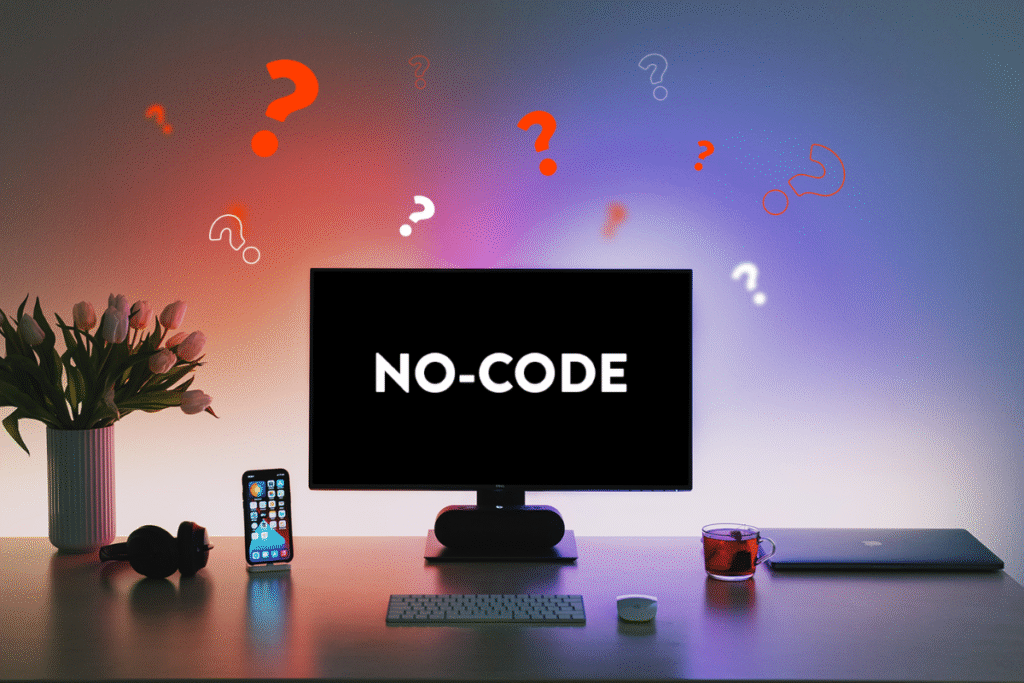Introduction
In today’s fast-paced digital world, businesses are constantly seeking faster, smarter, and more cost-effective ways to bring their ideas online. Traditionally, web development has been a complex process requiring advanced coding skills, specialized teams, and significant time and resources. However, in recent years, the rise of no-code and low-code web development platforms has revolutionized the way websites, applications, and digital solutions are built.
This movement empowers individuals and organizations with little to no technical knowledge to create fully functional websites and apps, bridging the gap between technical experts and business innovators. From startups to large enterprises, no-code and low-code platforms are reshaping the digital landscape, making innovation more accessible than ever before.
In this blog, we’ll dive deep into the rise of no-code and low-code web development, its benefits, limitations, real-world applications, popular platforms, and what the future holds for this growing trend.
What Are No-Code and Low-Code Development Platforms?
No-Code Development
No-code platforms are tools that allow users to build websites or applications without writing a single line of code. They typically use drag-and-drop interfaces, pre-built templates, and visual workflows to create functional products. These platforms are designed for non-technical users like entrepreneurs, small business owners, marketers, and content creators.
Examples: Wix, Webflow (visual design-heavy), Bubble, Squarespace, Carrd.
Low-Code Development
Low-code platforms are slightly different. They require minimal coding knowledge but drastically reduce the complexity compared to traditional programming. Low-code tools are often used by professional developers who want to speed up the development process or by businesses with in-house teams that need flexibility beyond no-code solutions.
Examples: OutSystems, Mendix, Zoho Creator, Microsoft Power Apps.
Why Are No-Code and Low-Code Platforms Gaining Popularity?
The rapid adoption of these platforms is no accident. Several global trends are fueling their rise:
-
Skill Gap in Technology
There’s a global shortage of skilled developers. No-code and low-code tools help fill this gap by enabling non-developers to create solutions. -
Faster Time to Market
Businesses want to launch websites and apps quickly. These platforms drastically cut down development time from months to days. -
Cost-Effectiveness
Hiring developers or agencies can be expensive. No-code platforms reduce the need for large technical teams, making it affordable for startups and small businesses. -
Accessibility and Democratization
Innovation is no longer limited to people with coding skills. Anyone with an idea can test, build, and launch it. -
Integration with Modern Tools
Most no-code platforms easily integrate with popular services like Stripe (payments), Zapier (automation), and Google Analytics.
Benefits of No-Code and Low-Code Development
-
Speed – Build websites or apps 5–10 times faster than traditional methods.
-
Reduced Costs – Save money on hiring specialized developers.
-
Empowerment – Non-technical users can turn their ideas into reality.
-
Scalability – Many platforms allow businesses to scale from small prototypes to fully operational apps.
-
Flexibility – Drag-and-drop builders make it easy to experiment with different designs and functions.
-
Collaboration – Business teams and IT teams can work together more effectively.
Limitations and Challenges
While the rise of no-code and low-code is revolutionary, it’s not without challenges.
-
Customization Limits: No-code platforms may not support very advanced or unique features.
-
Scalability Issues: Some solutions may struggle with very large-scale projects.
-
Vendor Lock-In: Businesses may become dependent on a specific platform.
-
Performance: Not always as optimized as custom-coded applications.
-
Security Concerns: Businesses need to ensure platforms meet compliance and data security requirements.
Real-World Applications
No-code and low-code platforms are used across industries:
-
Startups – Building MVPs (Minimum Viable Products) quickly.
-
E-Commerce – Creating online stores without hiring developers.
-
Healthcare – Managing patient records and scheduling systems.
-
Education – Online learning platforms and course portals.
-
Enterprises – Automating internal processes and workflows.
-
Marketing – Building landing pages, lead generation forms, and automation flows.
Popular No-Code and Low-Code Platforms
Here are some leading players driving the growth of this ecosystem:
For No-Code Websites & Apps:
-
Webflow – Advanced design-focused no-code website builder.
-
Wix – User-friendly platform for small businesses.
-
Squarespace – Creative portfolio and e-commerce sites.
-
Bubble – Build complex web apps without code.
-
Carrd – One-page websites, quick and simple.
For Low-Code Enterprise Applications:
-
OutSystems – Enterprise-level low-code platform.
-
Mendix – Used for large-scale business applications.
-
Zoho Creator – Custom app development for businesses.
-
Microsoft Power Apps – Integrates with Microsoft ecosystem.
The Future of No-Code and Low-Code
The future looks extremely promising. According to Gartner, by 2027, over 65% of application development activity will be driven by no-code and low-code platforms. As AI integrates more deeply, these platforms will become smarter, automatically suggesting workflows, designs, and even generating applications from simple prompts.
Some future trends include:
-
AI-Powered Development – AI will enhance automation, suggesting entire app frameworks.
-
Hybrid Development – A mix of low-code customization with traditional coding for flexibility.
-
Mainstream Adoption by Enterprises – More companies will shift to these tools for internal operations.
-
Global Accessibility – Small businesses and individuals worldwide will create digital solutions.
Best Practices for Businesses Using No-Code and Low-Code
-
Define Your Goals Clearly – Understand what you want to achieve before choosing a platform.
-
Choose the Right Platform – Different tools serve different needs (e.g., Webflow for design, Bubble for apps).
-
Plan for Scalability – Ensure the platform can grow with your business.
-
Focus on Security – Always check compliance and data protection features.
-
Keep Learning – Even with no-code tools, understanding design and user experience is crucial.
Conclusion
The rise of no-code and low-code web development is not just a passing trend—it’s a revolution. By lowering barriers to entry, these platforms are democratizing technology, empowering entrepreneurs, and accelerating innovation across industries.
While they may not fully replace traditional coding for highly complex projects, their role in shaping the future of digital development is undeniable. Whether you’re a business owner looking to build an online presence, a startup founder launching an MVP, or a large enterprise optimizing workflows, no-code and low-code platforms offer a faster, more affordable, and more inclusive path to innovation.
The message is clear: the future of web development is for everyone.
FAQs
What is the difference between no-code and low-code development?
No-code requires no programming skills, while low-code involves minimal coding to allow more customization and flexibility.
Can no-code platforms replace traditional developers?
Not entirely. While they reduce dependency for simple and medium-complex projects, advanced and large-scale solutions still need professional developers.
Are no-code websites secure?
Most reputable no-code platforms prioritize security, but businesses should always review compliance, encryption, and hosting policies.
Which is the best no-code platform for beginners?
Wix, Squarespace, and Webflow are popular beginner-friendly platforms.
Can enterprises use no-code tools?
Yes. Enterprises increasingly use low-code platforms like OutSystems and Microsoft Power Apps to automate workflows and build apps faster.
Is it possible to migrate from no-code to custom-coded apps later?
Yes, but it can be challenging depending on the platform. Some businesses start with no-code for MVPs and then move to custom solutions as they scale.
How will AI impact no-code development?
AI will make these platforms even smarter by generating code, designs, and workflows automatically, further speeding up development.

